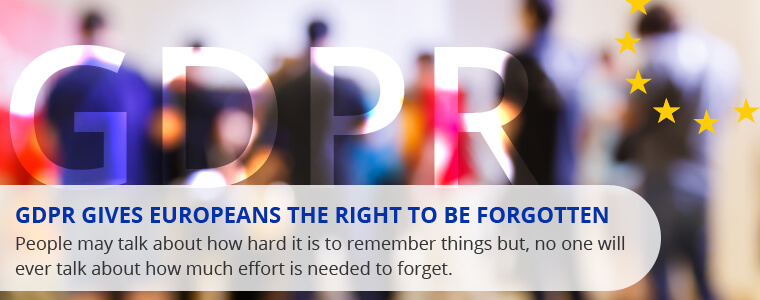
By John Kullmann | Published on March 4th, 2018 | Last updated on September 30th, 2024 |
In May 2014, the European Court of Justice instituted the “right to be forgotten.” This landmark ruling enabled Europeans to request that search engines like Google and Yahoo to delist from the sites which contain “inaccurate, inadequate, irrelevant or excessive” information containing the name of the petitioner. Further, the ruling also requires that search engine operators make the discernment between an individual’s right to privacy and the public’s lawful right to access information.
In 2018 Google Report, 2.4 million “requests to be forgotten” have been received from European petitioners. Google has only been able to comply with 43% of these requests. Of the 2.4 million requests, 19% percent are directory URLs, with news sites and social networks making up 17.6% and 11.6%, respectively. According to Google, part of the reason they’ve complied with less than half of the requests is due to “the existence of alternative solutions, technical reasons, or duplicate URLs. We may also determine that the page contains information which is strongly in the public interest. Determining whether the content is in the public interest is complex and may mean considering many diverse factors…”
But how does this impact your business, on May 25th of this year, the General Data Protection Regulation (GDPR) will affect all companies that handle European citizen’s data. Thanks to the GDPR, European citizens will have the ability to petition to have their personal data removed from ANY company’s database. The financial penalties for not complying with a request or any rule of the GDPR are astronomical. If you have a legacy Visual Fox Pro application, the GDPR regulations could have a detrimental effect on your business. Achieving complete GDPR compliance with an existing VFP database will be nearly impossible. If a VFP database contains personal data, the data can easily be read by any text editor, and there is no easy or direct way to encrypt it. If data is stored as plain text, anyone can read it, and this will lead to a major violation.
Luckily Macrosoft is here to help. If you’d like to learn more about the GDPR and how we can help you migrate from a legacy VFP application, click on the link and download our whitepaper!